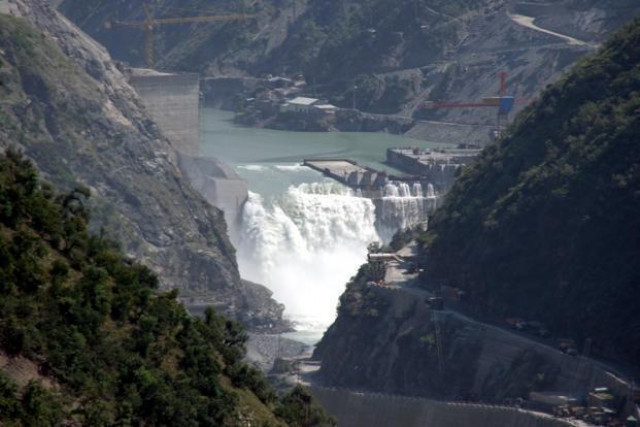Per capita water availability may fall to 860 cubic metres
Experts fear it will decline to 500 cubic metres if urgent measures not taken

Experts fear it will decline to 500 cubic metres if urgent measures not taken.PHOTO: REUTERS/FILE
If an effective strategy is not chalked out to conserve water, it will further fall to 860 cubic metres per capita. Experts believe that in 2040, it is expected to decline to 500 cubic metres per capita.
According to the international standard, the average availability of water per person is 1,800 cubic metres.
If it is less than 1,000 cubic metres, a country is declared suffering from water shortage. Pakistan currently ranks 23rd among 167 countries facing water scarcity.
It is also on the list of 33 countries which are predicted to face acute water shortage in the future. Other countries on this list include Bahrain, Kuwait, Qatar, Singapore, UAE, Palestine, Israel, Iraq, Armenia, Chile, Kyrgyzstan, Greece, Jordan, Libya, Yemen, Macedonia, Azerbaijan, Morocco, Kazakhstan, Turkmenistan, Afghanistan, Spain and Tanzania.
According to the experts, Pakistan is in need of emergency reserves to avoid water scarcity and increase the level of underground water.
They have also stressed the need for installing water meters to prevent wastage and improve the supply system.
Besides, it has also been suggested to spread awareness among the citizens about the conservation of water.
actors contributing to increased water demand include rapid increase in population, low water-usage efficiency, an extremely water-intensive economy and poor management of water resources and absence of a national water policy.
As is the case in most countries of the world, Pakistan’s agriculture sector is the largest consumer of water and hence, a major cause of water shortage. Resultantly, it is extremely important to devise mechanisms and methods for making crop irrigation more efficient to leave room for domestic and industrial supply.
By 2025, the demand for water is expected to increase up to 274 MAF with the supply remaining constant at 191 MAF, causing a demand-supply gap of 83 MAF.
Pakistan has the world’s fourth-highest water-usage rate. Pakistan’s economy is the world’s most water-intensive economy; which means that the amount of water utilised in cubic metres per unit of GDP is the world’s highest, which signifies that productivity/efficiency is the lowest in the world.
As Pakistan uses 93% of its freshwater resources on agriculture; there is a need to improve the efficiency rate which currently stands at 50%. Some studies suggest efficiencies as low as 33%, for canal irrigation. This means that only 33% of the water released into canals reaches from the farm gate.
Water infrastructure and weak project implementation are a few examples of what causes efficiencies to be low.
Despite this situation, Pakistan still has substantial potential of increasing water-usage efficiency. The country can increase productivity of water without increasing water supply. Increasing pressure on irrigation departments by farmers to become accountable and efficient, emergence of progressive farmers, introducing high-value crops and using latest agricultural technologies can greatly increase the efficiency of irrigation-water.



1724926799-0/Untitled-design-(7)1724926799-0-208x130.webp)















COMMENTS
Comments are moderated and generally will be posted if they are on-topic and not abusive.
For more information, please see our Comments FAQ